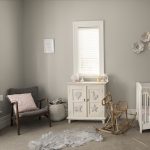
When designing a home, selecting the right color schemes is key to transforming each room into a functional and stylish space. Colors can influence mood and behavior, so it’s crucial to choose palettes that align with the purpose of each room. For instance, calming tones are ideal for bedrooms, while vibrant hues work well in kitchens. Understanding color psychology and how different shades connect can help you make informed decisions.
Living room: Creating a warm atmosphere
In the living room, warm tones like soft yellows, deep oranges, and muted reds create an inviting environment. These colors encourage relaxation and socialization, perfect for a space where families gather and guests are entertained. Accents like plush throw pillows or a cozy area rug can enhance the room’s ambiance. Balancing warm hues with neutral tones, such as beige or taupe, can help achieve a harmonious, welcoming, and stylish look. Integrating elements like textured wallpaper or decorative accessories can further elevate the room’s design, making it a comfortable and aesthetically pleasing space.
Bedroom: Colors for rest
Soft color palettes such as light blues, gentle lavenders, and creamy whites can help create a serene environment conducive to sleep. Textiles significantly complement your chosen color scheme; consider using bedding, curtains, and area rugs in coordinating shades. These elements add to the visual appeal and create a comfortable and restful space.
Kitchen: Vibrant and inviting colors
The kitchen is often the heart of the home, so it’s fitting to choose vibrant colors that stimulate appetite and encourage conversation. Bold colors like reds, oranges, and bright greens can invigorate the space. However, balancing these vivid hues with neutral tones is essential to avoid overwhelming the senses. A strategic use of accents, such as colorful backsplash tiles or vibrant kitchen accessories, can create an inviting atmosphere perfect for family meals and gatherings. Mixing different textures, like glossy tiles with matte finishes, can add depth and interest.
Bathroom: Refreshing and clean aesthetics
For the bathroom, choose colors that evoke a sense of cleanliness and freshness. Crisp whites, cool blues, and soft grays are ideal for creating a spa-like atmosphere. Consider accessories like patterned towels or a statement shower curtain to add personality without compromising the clean look. Integrating sleek fixtures and minimalist decor can further enhance the refreshing ambiance. Tiles in soft hues can bring a touch of elegance, while plants can introduce a natural, serene vibe. Remember, balancing these elements with good lighting can make the bathroom feel airy and inviting, ensuring it remains a tranquil retreat.
Nursery: Creating a soothing environment
Soft pastels like pale pinks, baby blues, and mint greens create a soothing nursery environment. These colors can help foster a calm and comforting space for babies and parents. Incorporating elements like this beautiful peel and stick grasscloth wallpaper adds texture and visual interest without overwhelming the room. Charming baby wallpaper featuring playful designs can further enhance the nursery’s aesthetic. Think about integrating coordinating textiles, such as crib bedding, curtains, and rugs, to create a cohesive look. Additionally, gentle lighting and soft furnishings can add to the overall tranquility, making the nursery a peaceful retreat for your little one.
Home office: Colors for productivity
In a home office, colors significantly influence your ability to concentrate and stay motivated. Greens are excellent for fostering a sense of balance and calm, while shades of blue are known for promoting focus and efficiency. Integrate these hues through wall paint, furniture, or decorative elements to create a workspace that feels both productive and soothing.
To avoid a monotonous look, consider adding pops of color with desk accessories or artwork that harmonize with your primary palette. A deep green accent wall can provide a striking backdrop, while lighter blue tones on other walls keep the space open and airy. Textiles, such as rugs or curtains in complementary colors, can add warmth and comfort without distracting your tasks. Lighting is another crucial aspect; natural light is ideal, but task lighting in cooler tones can also help maintain a productive environment.
Functional items like organizers or shelves in coordinating colors can keep the workspace tidy while enhancing the overall aesthetic. Plants are another great addition, offering both a splash of green and fresh air, which can boost your mood and creativity. Try using a mix of materials and textures to add depth and interest without overwhelming the space. For instance, pairing a wooden desk with metal accents can create a balanced and modern look.
Finally, personal touches like family photos or motivational quotes can make your home office uniquely yours, inspiring while maintaining a professional atmosphere.
Selecting appropriate color schemes for various rooms can significantly enhance the look and feel of your home. These tips will help you craft a home that is cohesive, functional, and true to your style.
Image Source: Freepik



